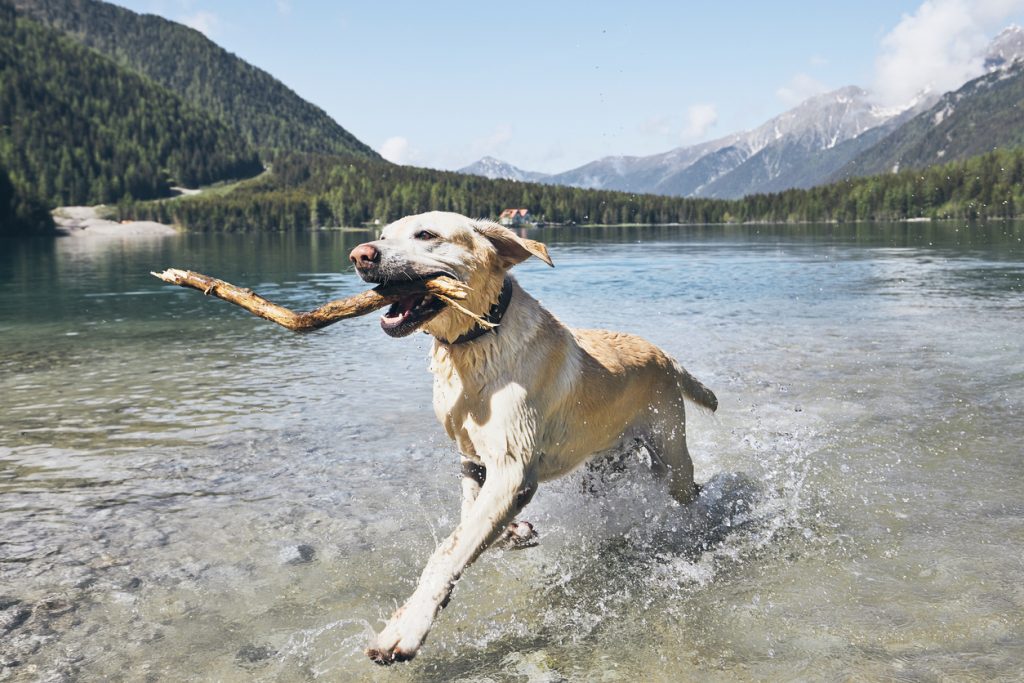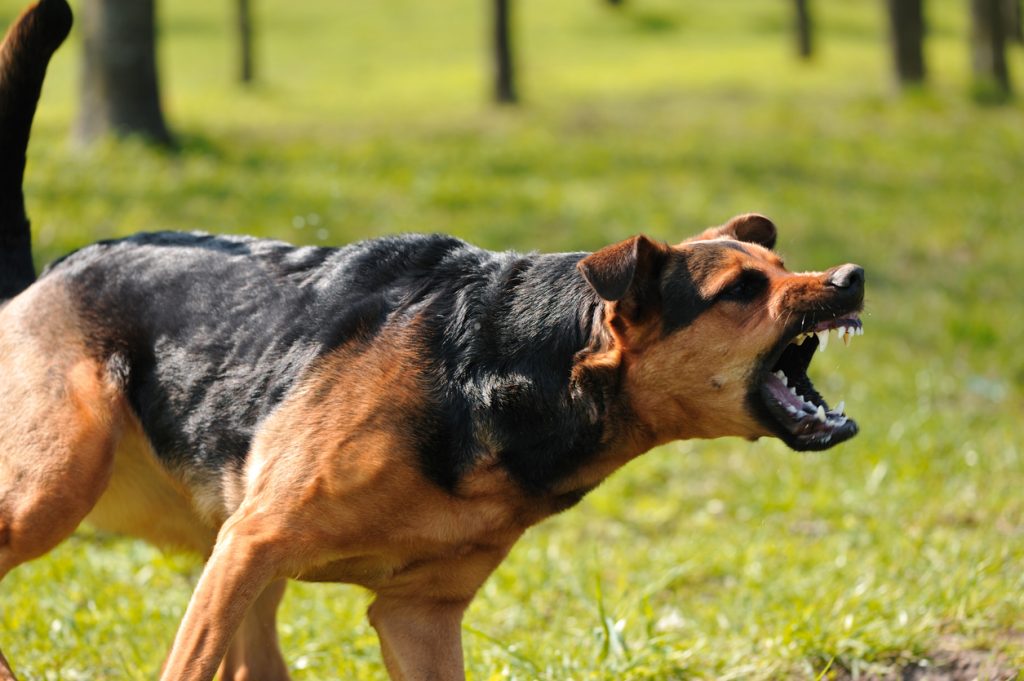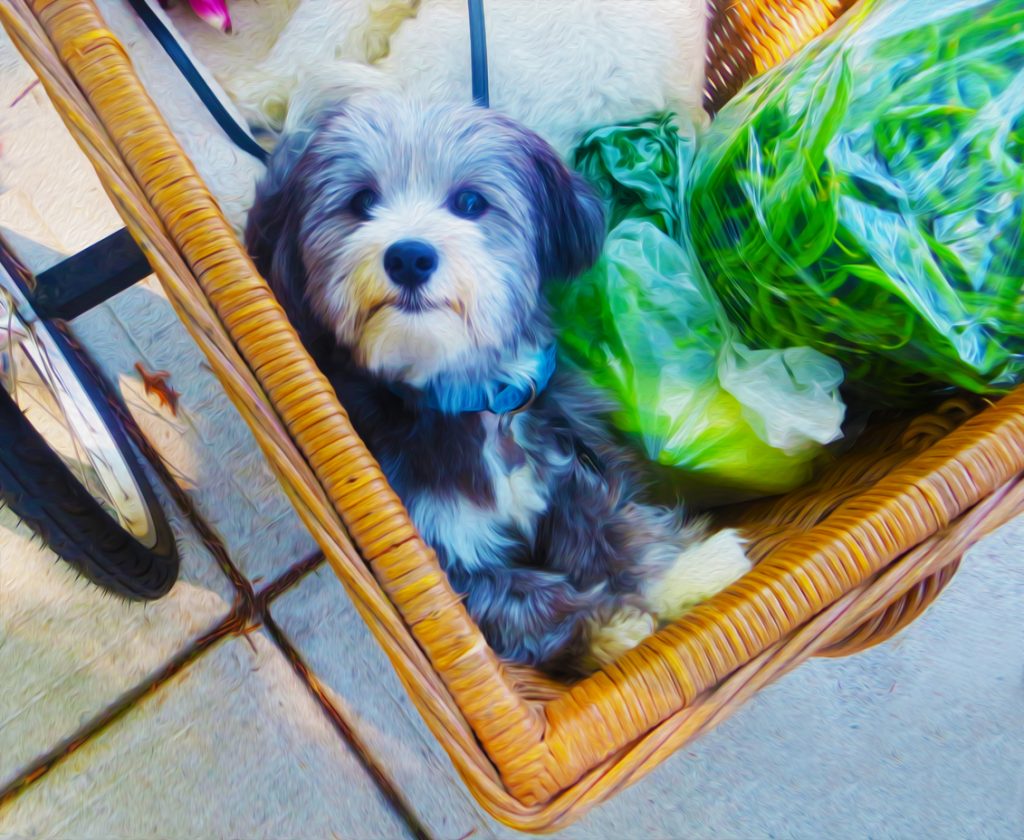When you think about the term “socialization,” what comes to mind? Perhaps it is going to dinner or out with friends, meeting new people at a club or café, or speaking to someone on the phone during winter when you refuse to leave the house. Humans socialize all the time – from the time we are born, we are exposed to many different people and environments. Eventually we go to school and spend everyday with many other children, learning and experiencing new things. Socializing with others is something that we take for granted, and typically continues for the rest of our life.
Could you imagine, however, if we were only ever exposed to one or two other people from the time we were infants? If we spent everyday in the same house and were rarely exposed to what lay beyond?
This is how many dogs experience their lives. Our dogs are purchased as puppies, taken out with us until they grow a bit older and then left at home all day while we are at work or out of the house. Dogs are inherently social beings like we are – they require regular interaction and exploration to remain psychologically sound.
What is socialization?
According to the Merriam-Webster Dictionary, Socialization is defined not just as the action of “social interaction with others,” but also as, “the process… by which individuals acquire the values, habits, and attitudes of a society.” For your pup, each interaction they have with other people, children or dogs is an opportunity for learning. Socialization teaches dogs that other creatures are not necessarily harmful, and that they can actually provide highly enriching experiences. Socialization helps teach your dog how to appropriately behave in a variety of settings and how to safely interact with other dogs.

How do you socialize a dog?
Unfortunately, a majority of dogs spend most of their time in a single environment for most of their day. Typically, this environment consists of being contained in a crate or to a few rooms of the house while their owners are at work. They may get out for a 30 minute walk or so, normally down the same route unless they begin reacting to unfamiliar stimuli – then their walks gradually disappear as well. Imagine a life like this – most people can barely stand being confined in their homes for more than a few days at any one time, let alone their entire life!
Effective socialization is a critical component in the development of a well-behaved, environmentally stable pup. In puppies, there is a short ‘window of opportunity’ for socialization – after which it becomes significantly more difficult to desensitize them to different environments, people and animals. The first window of socialization typically lasts from three weeks to three months, and then another corresponds to fear and instinct developmental stages between 4-8 months and 6-14 months.
During these developmental stages, it is critical to expose one’s puppy to a wide variety of environments and stimuli. This means taking your puppy to different houses, in urban environments, to the outdoor seating area of your local café, to the farmer’s market and to the many dog-friendly indoor establishments available (such as Home Depot, Tractor Supply and Petsmart). It is important that these experiences remain positive and calm. Any symptoms of fear or discomfort should be worked through – DO NOT encourage your dog’s fearful behavior by holding them, petting them or coddling them. Doing so will teach them that their fear is valid and that they will be rewarded for behaving in such a manner. When you notice that your dog is startled or uncomfortable around something (provided that it is completely safe to expose them to), calmly bring them closer using treats and rewarding any signs of curiosity. Let them explore the item and reinforce desirable behaviors until they are comfortable with it. Always end your socialization on a positive note!

This same philosophy can be applied when socializing your dog to people. Dogs do not understand that humans can choose to wear hats, grow beards or long hair, ride bicycles, wear sunglasses or large jackets. Dogs are also place learners, which means that they cannot automatically generalize behaviors to different environments. That is why, although your pooch may immediately “sit” on cue in your kitchen, they will completely ignore you at the dog park. The same rules apply to socialization – your dog may be very comfortable with new people in your house, but may recoil at the approach of a stranger in a shopping center. It is important to expose your pup to as many different types of people as possible (genders, ethnicities, ages, appearances) when they are younger so they are prepared for anything they may encounter when out and about.
Although puppies have a window where their psychological pliability peaks, it is very possible to socialize older dogs – including rescues who may have had traumatizing experiences in their early lives. The key is to never push them so over their threshold that they become overwhelmed and reactive. Always monitor your pup and begin slowly; perhaps by just introducing one new person in a passive, non-threatening way and gradually building on these experiences when they seem ready. Try to only introduce one new factor at a time: either by adding more people to a place they are already familiar with or changing environments while minimizing new people/animals. Once they are familiar with a new environment it is okay to expose them to new things within that environment.
TIP: If your pup appears to be uncomfortable with a person, ask that person to feed them some treats in a very non-confrontational way (avoiding direct eye contact, body turned to the side, slowly extending hand and letting the dog come to them). This will help build your dog’s trust. Avoid fast movements or hand gestures, speaking loudly, direct confrontation, petting or bending over the dog.
What are the benefits of socialization?
The benefits of socializing your pooch are numerous! Unfortunately, they are also often overlooked. Some benefits of socialization include:
- Significantly reducing risks of common behavioral problems including aggression, separation anxiety, leash pulling, excited urination, nervous habits and defensive barking.
- Greatly increasing the chances that your dog will listen to your obedience commands when out in public or at a friend’s house.
- Creating a safer dog – not just around others but also for their self. A well socialized dog is less likely to take off down the road, ignore obedience commands or react inappropriately to new situations.
- Creating happier owners. A well socialized, environmentally stable dog can go virtually anywhere with their owners and create minimum stress. They will be happier, significantly less reactive than under-socialized dogs, will be less defensive and less excitable. A well socialized dog will typically be more responsive to its owner’s cues, will pull less, jump less and bark less.
- Providing mental and physical stimulation for your dog so they are calmer within your home.
What kind of problems can arise if a dog is not socialized?
Until more recent years, the only dogs that one would find in the public were service dogs. Between the increases in living costs, the fact that more people are devoting themselves to their career (and consequently having less human children), and the glorification and humanization of canines in films and TV, the “furbaby” was born.
More people are taking their dogs out in public, spending time at dog parks, taking their pups to friends’ houses and inquiring about how to get their pooch registered as an ESA (emotional support animal). Due to demand, more commercial store chains and restaurants are now “dog-friendly,” allowing patrons to bring their well-behaved pup inside with them.
Many people would love to take their dog out with them when they have the opportunity but are uncomfortable doing so because their dog has not been socialized. The consequence of this is that their pup now exhibits undesirable behavior when in public. Watching your dog lunge at people it doesn’t know, bark obnoxiously, or drag you from stranger to stranger can be frightening and frustrating. Even perfectly well-behaved dogs can exhibit reactive or aggressive symptoms when taken into public if they were not effectively socialized.

Sometimes well-intentioned owners will attempt to socialize their puppy by bringing it to the dog park. One bad experience with another dog (especially a larger, attempting-to-dominate-or-maul-weaker-dogs bully) can set them back for a very long time, possibly forever if it is not dealt with correctly. It is not recommended that you bring your puppy to the dog park if it can be avoided – too many tragic accidents happen here, even from “friendly” dogs.
Another issue that dog owners (especially new puppy owners) will experience is this: They begin taking their new puppy out at ten weeks of age. Everything is great – their puppy is wagging its tail when it meets new people, perhaps licking them gently and wriggling joyfully around their ankles. The puppy is excited at the prospect of meeting new dogs, confronting them quietly, ears back, tail wagging – possibly even rolling over. Everything seems to be going well and then suddenly… everything changes. Your quiet, well-behaved puppy suddenly begins barking at new people, staring them down from 100 feet away, spooking at industrial trash cans and baring teeth and lunging at unfamiliar dogs. It won’t sit still, won’t listen to your commands and seems like it may have been possessed overnight.
Fear stages and puppy adolescence can wreak havoc on a new dog owner’s confidence. Oftentimes people do not know what to do when their dog’s behavior suddenly begins to change, and they panic. Because taking the puppy into the world is no longer enjoyable, they feel embarrassed and slowly begin containing their dog to the house. The tension that the owners experience when their dog is lunging or barking travels down the leash and makes the dog more reactive. Sometimes owners coddle fearful adolescents by petting them and speaking softly to them, promptly removing them from the object of their fear. Over time, these reactions become more extreme and the triggers become more excessive until the pup is terrified of seemingly everything.
During these times, people will frequently decide to take the most straightforward route and completely stop taking their dog out. No more puppy play dates, pleasant moments with strangers or new experiences – they become confined to four walls and a roof. The pup then develops with these fears, new reactions and behaviors never resolved. Over time, whatever is fed grows…they bark more frequently at strangers passing by, lunge at company more or are confined to a crate when the doorbell rings because they are “embarrassing.” Owners become increasingly tense and reactive, and suddenly what was once a sweet, social puppy becomes a severe case of aggression.
How can you fit socializing your dog into your schedule?
The primary excuse that many trainers hear when dealing with undersocialized clients is that owners “do not have the time to take their dog/puppy out regularly.” Many times, these individuals work full-time jobs, commute to work and back in rush hour traffic and have children who are involved in extracurricular activities on the weekend. When you have a busy life, it may seem impossible to make additional trips out just to socialize your dog or puppy.
Luckily, there are easy ways to integrate regular socialization into your schedule that don’t require a massive time commitment or break in schedule! Some fun ideas for adding socialization into your pup’s schedule are:
- Take your pup with you on coffee outings. Meeting a friend for coffee? Choose a café which offers an outdoor seating area and bring your pup! Don’t panic if they are excited or afraid at first – find a secluded table, offer plenty of treats and give them time to relax. Starbucks even offers a “Puppaccino” at no charge to dog owners!
- Plan a weekend nature trip with your family. Instead of going to the mall with your kids, take the family to a park or nature preserve which allows dogs and go explore! This will offer mental stimulation and physical activity for the entire family. Just make sure that you check out the leash rules first, and be cautious around other dogs who may be off leash.
- Take your pup to an outdoor shopping area or farmer’s market instead of going alone.
- Move your walks. Instead of taking the same walking route over and over, try changing it up and walking in a different area. In just 30 minutes, you can give your pup a valuable change of scenery and opportunity to socialize.
- Work on your obedience training in new places. At the local park, downtown, in your driveway, on the sidewalk, at your friend’s house, etc.
- Join a group class. Obedience, agility, tracking, nose work… the options are endless! Group classes are a fantastic way to socialize your dog in a controlled, productive setting. They can also be a great way to increase your dog’s confidence, teach them really cool things and make friends (for both of you).
- Be creative. Just 20-30 minutes of socialization, a few days per week are adequate enough to work on your pup’s socialization without overwhelming them or taking significant time from your schedule. Take them for a car ride, take them to Home Depot when you are getting home improvement materials, bring them to a friend’s house, get involved in a nonprofit where you and your dog can volunteer to do therapy dog work for those in need, or any other number of things which allow your pooch to stretch their comfort zone in a positive manner.

In conclusion
Socializing your dog is truly one of the greatest gifts that you can give them. There is no expensive harness, indestructible chew toy or bacon flavored dental chew that would mean more to them than spending time exploring the world with their favorite person. By taking just a bit of time out of your schedule every week, you can make your dog’s existence so much more fulfilling. For no cost, you can satisfy their sense of curiosity, optimize their mental and physical health and build your bond.
Providing your dog with a regular socialization schedule will make them safer, calmer and happier – it will also offer the same benefits to you and your family. So many behavioral problems could virtually be avoided or minimized if dog owners could just brave through fear phases and adolescence, saving lives and thousands of dollars.
Socialization + Obedience = the perfect combination for a well-adjusted, environmentally stable pup. Think about your own dog for a moment: How could you offer them the gift of socialization?


You must be logged in to post a comment.